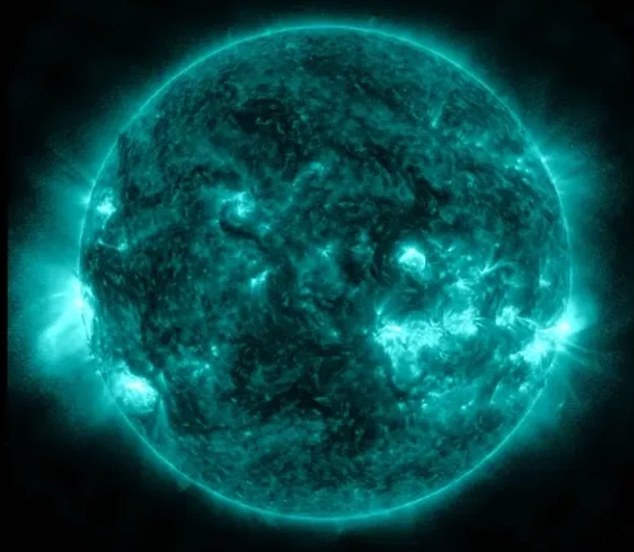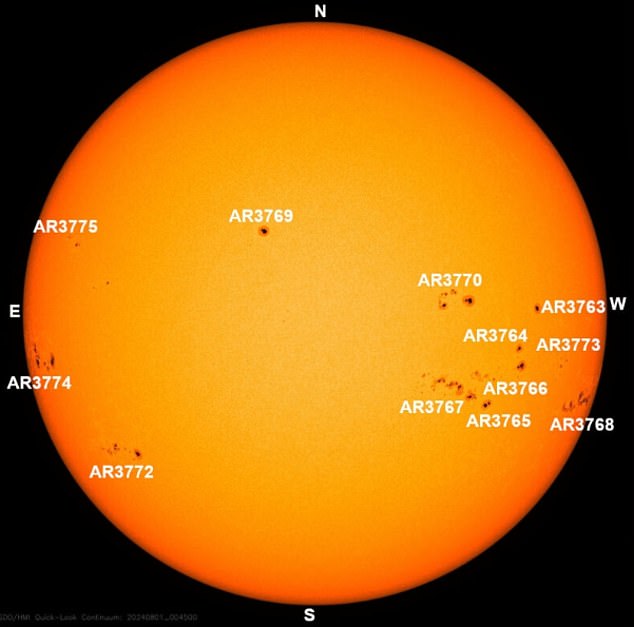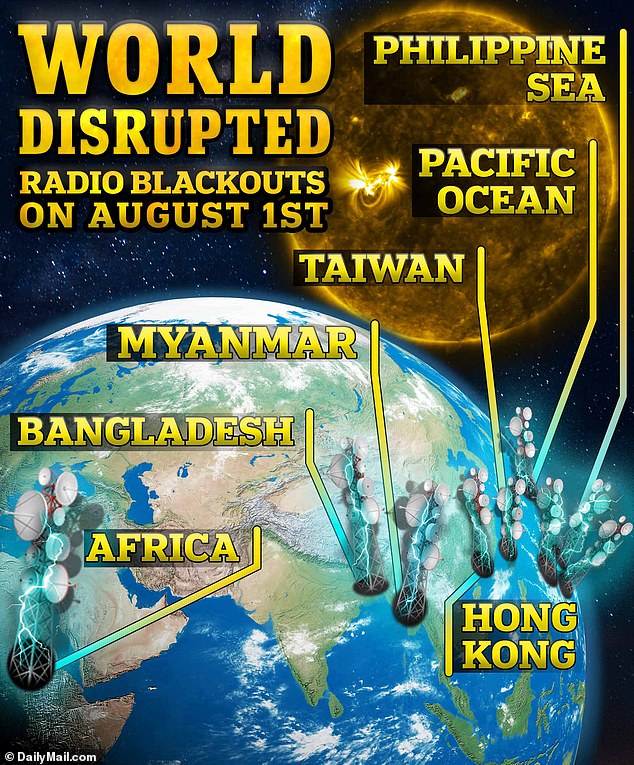Radio blackouts were reported around the world on Thursday, triggered by a “tsunami” of solar storms, and scientists say more disruptions are on the way.
The Sun has released at least 15 plasma streams, or coronal mass ejections (CMEs), in the past 24 hours, disrupting communications. over parts of Africa and Asia when they impacted the Earth.
Trackers from the National Oceanic and Atmospheric Administration (NOAA) show the disturbances are moving toward the United States.
This type of solar activity can cause problems in satellite operations in space, aviation and maritime communications and disrupt GPS.
Parts of Africa and Asia have experienced disruption, and the National Oceanic and Atmospheric Administration’s (NOAA) tracker shows the storm’s “noise” moving westward toward the United States.
NOAA also noted that radio blackouts are likely to continue through at least August 4, possibly affecting radios, air and maritime communications, and satellite operations.
The storms are forecast to bring auroras to many northern states, including New York.
The Sun has been experiencing high levels of activity over the past week as there are 12 active sunspots, cooler patches on the Sun’s surface caused by massive shifts in our star’s magnetic field, that are oriented toward Earth.
Space weather experts have called the recent activity a “tsunami of solar storms.”
Sunspots, often larger than planets, appear dark on the Sun’s surface because they are cooler than other parts (though still very hot, about 6,500 °F).
Magnetic field lines near sunspots often tangle, cross, and rearrange themselves, which can lead to a burst of energy called a solar flare.
Active region AR3774 has been the main producer of flares with nine streams of energized particles since Wednesday.
NOAA shows another plasma stream will hit Earth, likely triggering a geomagnetic storm, a major disturbance in Earth’s magnetosphere that impacts satellite orbits and causes radio blackouts.
‘Solar activity was heightened over the weekend and several events, including solar flares and filaments, were associated with CMEs,’ NOAA shared on its website.

The Sun has released at least 15 plasma streams, or coronal mass ejections (CMEs), in the past 24 hours that have impacted Earth.

The Sun has been experiencing high levels of activity over the past week, as there are 12 active sunspots – cooler patches on the Sun’s surface caused by massive shifts in our star’s magnetic field – that are oriented toward Earth.
‘Some of these CMEs were determined to have components headed toward Earth.
‘R1-R2 (minor to moderate) solar flares are still expected through the weekend (August 1-4). There is also a possibility of an R3 (strong) event.’
The R scale refers to “radio blackouts,” where “1” means minor, generally implying weak or minor degradation of HF radio communication on the sunlit side and occasional loss of radio contact.
And ‘2’ means limited blackout of HF radio communication on the sunlit side and loss of radio contact for tens of minutes.
NOAA reported that the nations affected by unrest on Thursday were R-2.
These regions included Taiwan, Hong Kong, Myanmar, Bangladesh and much of West Africa.
NOAA has reported that in the next 24 hours, there is a 75 percent chance of M-class flares that typically cause brief radio blackouts affecting Earth’s polar regions, and a 25 percent chance of X-class flares that cause worldwide radio blackouts.
But solar activity has a silver lining: It could bring stunning auroras to some US states, including Montana, Minnesota and North Dakota.
In late July, NASA captured an eruption of dark plasma on the Sun.


